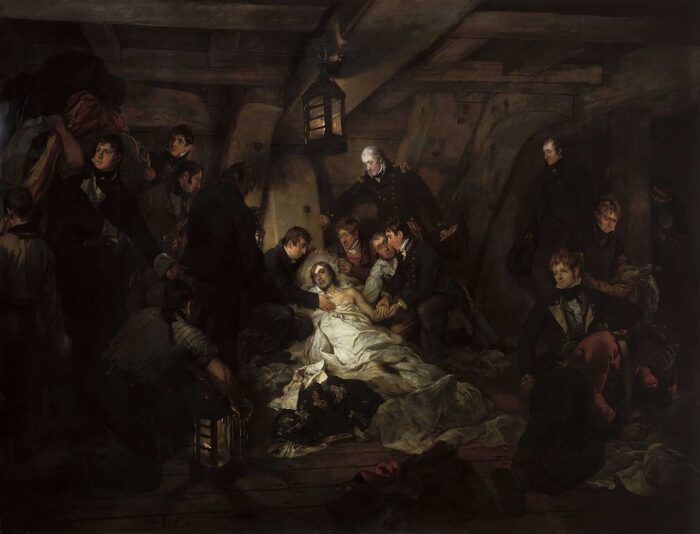
In the annals of naval history, there exists a little-known link between Limerick and one of the most celebrated figures in the Royal Navy, Vice Admiral Horatio Lord Nelson. This connection is forged through the role of the Purser, an essential position responsible for the management of finances aboard naval vessels.
During their time in the Royal Navy, Pursers held a pivotal role in handling money on board ships, which included the procurement of vital supplies such as provisions, clothing, bedding, and candles. Moreover, they played a crucial role in overseeing ship maintenance and operations. These stalwart officers of the navy remained with the ships in port between voyages, ensuring their care and supervising repairs and refitting.
In modern times, the Purser’s role has evolved into a multifaceted office on passenger ships, responsible for general administration, fee management, currency exchange, and catering to various financial needs of passengers and crew. The Chief Purser often holds a rank equivalent to that of the Chief Officer, and their responsibilities are as diverse as their historical counterparts.
One individual who embodied this historical role was William Burke, born in Limerick in 1736.
Burke joined the Royal Navy, following a family tradition, and became the eldest member of the crew on board the HMS Victory from April 18, 1804, to January 15, 1806.
In 1805, during the epic Battle of Trafalgar, William Burke served as the Purser aboard the HMS Victory when Horatio Nelson was mortally wounded.
Burke witnessed Nelson’s final moments and was immortalised in a painting by Arthur William Devis, titled ‘The Death of Nelson, 21 October 1805’, depicted to the right of the admiral, supporting his pillow.
William Burke’s connection to the Royal Navy extended beyond his own service. He had at least three sons who also served in the navy, a testament to his family’s dedication to the maritime cause.
One of his sons, Henry Burke, rose to the rank of commander and captained the 16-gun brig-sloop HMS Seagull from June 1802. Tragically, Henry and a younger unnamed son perished with the rest of Seagull‘s crew when the vessel disappeared at sea in the English Channel in February 1805.
Another son, Walter Burke, achieved the rank of lieutenant but met a similar fate, succumbing to mortal wounds sustained while on board the French ship Chevrette in July 1801.

After retiring from the navy, William Burke settled in Wouldham, Rochester, England, where his residence, known as ‘Burke House’, became a local tourist attraction. He passed away on September 12, 1815, at the age of 79 years old. His final resting place was in Wouldham Church’s graveyard.
His headstone bears a poignant inscription, commemorating his role as the Purser on HMS Victory during the momentous Battle of Trafalgar and his presence at Admiral Nelson’s side during his final hours. Local school children would visit his grave to commemorate Battle of Trafalgar.
William Burke’s legacy as a Purser from Limerick is not the only remarkable tale of its kind. Another Limerick native, Christopher Carlton Rice, left an indelible mark as a Purser in the United States Navy.
Christopher Rice’s journey led him to rise as a respected figure in New York society. He became a naturalised citizen of the United States on October 15, 1832. In 1834, Rice entered the political arena as a Democrat in New York’s borough, vowing to combat monopolies in state prison services, banking, insurance, and the repeal of debt-related imprisonment.
In 1839, Christopher Rice assumed the presidency of the “Irish Emigrant Relief Association”. During that year, the association came under scrutiny when two members misappropriated funds meant for charitable causes. Rice swiftly removed these individuals from their positions and publicised their actions in the Fulton Newspaper, New York.
Christopher Carlton Rice died on March 5, 1846, aged only 40 years old. Unlike Burke, it is not known what ships Rice served on as Purser but the officers of the Continental and US Navy and Marine Corps paid tribute to his memory.
An obituary in the Limerick Reporter of 1846 encapsulated the sentiments of many, celebrating Christopher Carlton Rice as an Irish exile who had always held a deep affection for Ireland and, in particular, his native Limerick.
His funeral in New York marked a significant event, drawing a large crowd, including marines, naval officers, and crews of United States vessels. All the honour befitting a naval officer was accorded to him, with four lieutenants of the navy serving as pall-bearers. The commodore of the port, along with all the officers of the navy yard in Brooklyn, also paid their respects. Rice now rests in the burial ground attached to St Patrick’s Cathedral, a testament to his enduring connection to his homeland.
These tales of two Pursers, William Burke and Christopher Carlton Rice, illuminate a remarkable connection between Limerick and the illustrious history of naval service, spanning both the Royal Navy and the United States Navy. Their dedication and contributions serve as enduring reminders of the integral role Pursers played in maritime history.






